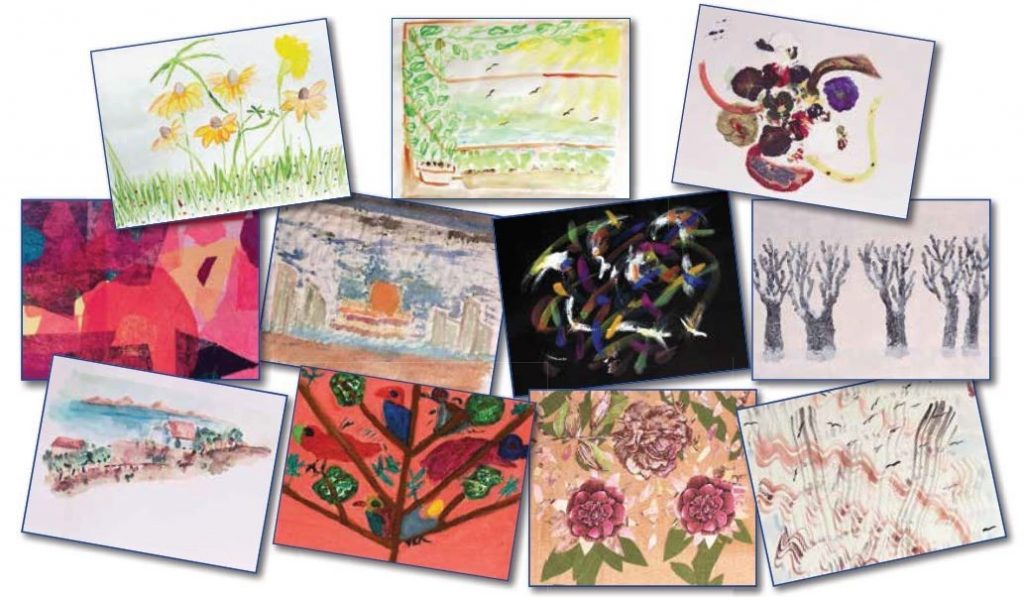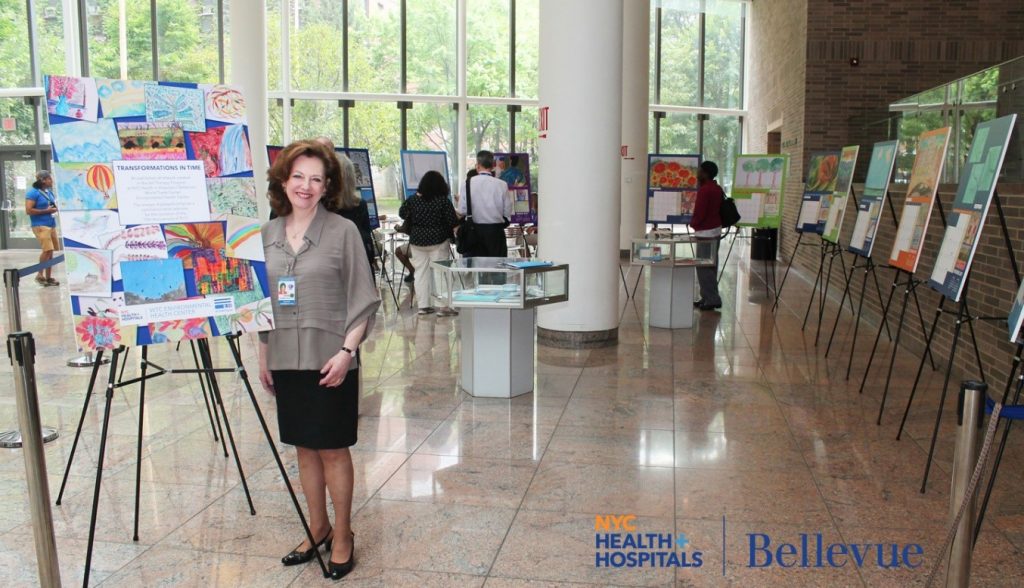By Kat Michel | September 7, 2016 | Trauma | Events |
From September 6-8, 2016, Bellevue Hospital in New York City will be hosting the exhibit “Transformations in Time,” artwork created in response to 9/11 and in observance of its 15th anniversary. The artworks, created through the Art Therapy Program at NYC Health + Hospitals/Bellevue’s World Trade Center (WTC) Environmental Health Center, serve as visual representations of change and growth. According to the exhibitors:
Over time, the artwork has gradually changed from visions of 9/11 that conveyed anxiety and depression, to images of natures, growth and realism—uplifting in content and rich in color. The exhibit commemorates the 15th anniversary of the tragic events, but more so — it meaningfully celebrates the artists’ profound recovery and resilience. It is our hope that the artwork will serve as a poignant reflection of the power of transformation through creativity and action —an inspiration for the continuing path forward.
- Artwork from “Transformations in Time,” an exhibition created in the Art Therapy Program at the Bellevue Hospital World Trade Center Environmental Health Center.
- Irene Rosner David, Ph.D, ATR-BC, LCAT, HLM, at the “Transformations in Time” exhibit. September 2016.
Of the exhibit and her work with it at Bellevue Hospital, Irene Rosner David, Ph.D., ATR-BC, LCAT, HLM, writes:
I initiated art therapy services when the tragedy first happened, working with patients who ran from the towers and were under the rubble, then a few years later when Bellevue’s pulmonary clinic expanded to include workers, residents, and passersby in lower Manhattan presenting with resultant medical problems due to inhaling the toxins. Art therapy became an integral component of care.
In the earlier years of the clinic program there were prevalent pictorial images that were direct or symbolic of the event, e.g. the collapse, the debris, the fires, smoke, the ‘dust cloud’, as well as anxiety and depression related to pulmonary and other physical disorders– all reflected, processed and supported in art therapy. Gradually, the artwork and patients’ demeanors changed, with artwork now generally including nature, full in content and color, as well as greater insight and pleasure in the art, and in life. The calendar format was chosen for the concept of time, marking a September-to-September duration.
The related exhibit is comprised of enlarged pages from the calendar, as well as quotes from the patients attesting to how much their participation in the program has helped them to integrate the past and life more fully in the here and now.



